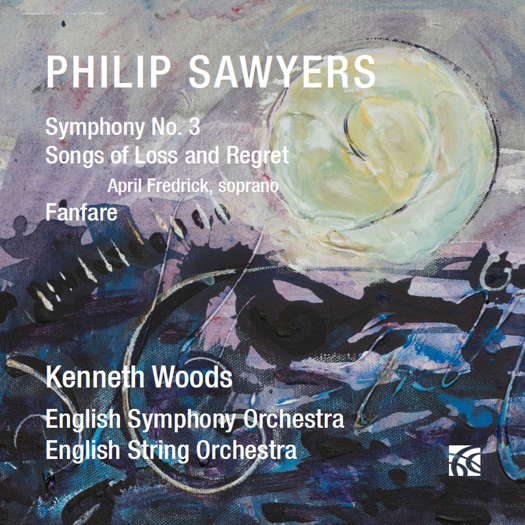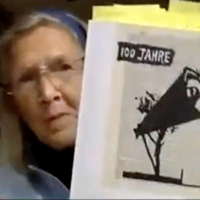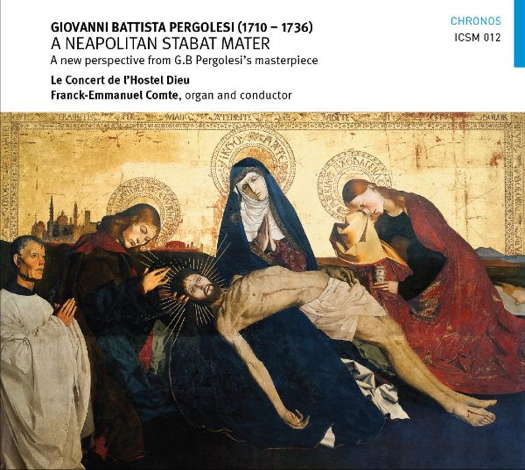- Schumann
- Julian Bream
- heaven
- Virginia
- Ginastera
- Hamish Brown
- Richard Strauss: Salome
- Oswald Spengler
 SPONSORED: CD Spotlight. View from the Celli - Philip Sawyers' Symphony No 3 impresses Alice McVeigh.
SPONSORED: CD Spotlight. View from the Celli - Philip Sawyers' Symphony No 3 impresses Alice McVeigh.
All sponsored features >>
 VIDEO PODCAST: Discussion about Bernard Haitink (1929-2021), Salzburg, Roger Doyle's Finnegans Wake Project, the English Symphony Orchestra, the Chopin Competition Warsaw, Los Angeles Opera and other subjects.
VIDEO PODCAST: Discussion about Bernard Haitink (1929-2021), Salzburg, Roger Doyle's Finnegans Wake Project, the English Symphony Orchestra, the Chopin Competition Warsaw, Los Angeles Opera and other subjects.

Lauded all over Europe
Pergolesi's Stabat Mater,
recommended by GERALD FENECH
'... performances are passionately committed, resonating continuously the collective emotion that is mystical and festive, painful and joyous, surprising and disturbing.'
Since the middle of the eighteenth century, the Stabat Mater by Giovanni Battista Pergolesi (1710-1736) has been lauded all over Europe as one of the true sacred masterpieces of the Baroque era. Its initial success in Lyon can be accredited to the ever-growing musical societies, in particular, the Academie du Concert. This institution was one of the most formidable in its field, performing a wide range of sacred and profane Italian and French music. In the library of this distinguished institution, now kept in Lyon's library, Franck-Emmanuel Comte found a very strange and unusual manuscript of the Stabat Mater. This score is presented in a most unexpected arrangement. Apart from a few minor modifications in the instrumental parts, the second solo voice part is entrusted to a baritone (due obviously to the disappearance of the 'castrati'), while the fugues and verse 'O quam tristis' are arranged for five voices. Thus, the Latin poem takes on a whole new dimension, gaining a strong sense of the theatre and dramatic emphasis.
Listen — Pergolesi: O quam tristis (Stabat Mater)
(track 4, 0:00-0:47) © 2018 ICSM Records :
In order to accompany this dramatization of the Stabat Mater as well as nourish its intention, Comte and his ensemble have enmeshed various traditional polyphonies such as the 'Stabat Mater' and 'Miserere', songs in the shape of 'Donna Isabella' and 'La Carpinese', and two tarantellas. This juxtaposition of scholarly music and popular art, of the sacred and profane, conveys the Neapolitan spirit through and through.
Listen — La carpinese (tarantella)
(track 18, 0:00-0:52) © 2018 ICSM Records :
Today, this authentic spirit continues to flourish, especially during Holy Week, through spectacular and heartfelt ceremonies. Musically, these are characterised by a mesmerizing convergence of religious songs sung by the celebrants, polyphony improvised by the confrères in procession carrying the Cross, flonflons (loud party music) of the local band playing extracts from the Stabat Mater or some Verdi opera, and simultaneously outdoors, tarantellas are sung, danced and stamped.
Listen — A Cantina (Tarantella)
(track 8, 3:43-4:33) © 2018 ICSM Records :
This marvellous issue is all this and more; indeed, performances are passionately committed, resonating continuously the collective emotion that is mystical and festive, painful and joyous, surprising and disturbing. A disc to be savoured and enjoyed not only during Holy Week, but throughout the year. Sound and notes are first-rate.
Copyright © 7 June 2019
Gerald Fenech,
Gzira, Malta

CD INFORMATION - PERGOLESI: A NEAPOLITAN STABAT MATER


